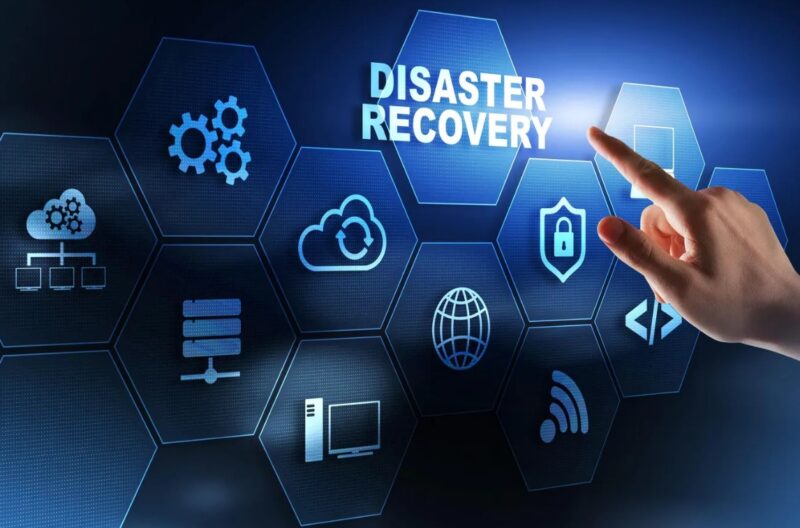Disasters, be they natural calamities or technological crises, can strike unexpectedly, disrupting operations and causing substantial setbacks for businesses. In such critical moments, a robust disaster recovery plan becomes paramount to ensure continuity and minimize the impact of unforeseen events.
Crafting an effective strategy involves meticulous planning, the utilization of advanced technologies, and a comprehensive approach to mitigate potential risks.
Page Contents
Understanding Disaster Recovery
At the core of disaster recovery lies the need to anticipate and prepare for potential threats. It begins with a thorough risk assessment to identify vulnerabilities within the infrastructure, applications, and data systems. This assessment serves as a foundation for creating tailored recovery strategies that address specific risks.
Key Components of a Comprehensive Recovery Plan

Risk Assessment and Analysis
To fortify disaster recovery efforts, a comprehensive risk assessment and analysis form the cornerstone. This involves a meticulous evaluation of potential threats and vulnerabilities across the organization’s infrastructure, applications, and data systems.
A thorough understanding of both internal and external risks is crucial. Additionally, analyzing the potential impact of diverse disaster scenarios on various facets of the business, including operational, financial, and reputational aspects, lays the groundwork for a targeted response.
Through this process, critical assets are identified, meticulously prioritized, and allocated resources to ensure their utmost protection.
Establishing Clear Objectives
Precision in setting recovery objectives is paramount. Defining Recovery Time Objectives (RTOs) and Recovery Point Objectives (RPOs) tailored to different systems and applications is critical. These objectives should be intricately aligned with the criticality of specific business functions.
This alignment streamlines the process, ensuring an efficient restoration of operations while minimizing disruptions to essential services and functions.
Backup and Data Protection
Robust backup and data protection measures are fundamental pillars of an effective disaster recovery plan. Implementing resilient backup solutions that facilitate continuous data replication is key. Leveraging advanced technologies like snapshots, incremental backups, and remote backups ensures comprehensive data protection and integrity.
Regular and rigorous testing and validation of backups are imperative to guarantee their reliability and effectiveness in the event of a disaster.
Leveraging Cloud-Based Solutions
The inherent flexibility and scalability of cloud-based solutions offer a robust foundation for disaster recovery. Embracing cloud platforms allows organizations to effectively harness these advantages. A private cloud environment, specifically, provides greater control and security over sensitive data, significantly reducing recovery times and minimizing downtime during critical periods.
Establishing Redundant Systems
Establishing redundancy and failover mechanisms is essential to ensure seamless continuity amidst system failures. Creating redundant systems and deploying failover mechanisms mitigate disruptions. Geographically distributed data centers strategically placed to mitigate the impact of regional disasters play a pivotal role in maintaining uninterrupted operations.
Regular Testing and Training

Ongoing testing and training initiatives are vital components of an efficient disaster recovery strategy. Regularly conducting drills and simulated recovery exercises rigorously tests the effectiveness of the plan.
Equally important is providing employees with comprehensive training regarding their roles and responsibilities during a disaster. This ensures a swift, coordinated, and efficient response when faced with adversity, contributing significantly to the overall resilience of the organization.
Vendor and Partner Collaboration
Collaborating with vendors and partners plays a crucial role in disaster recovery. Establishing clear communication channels and aligning plans with suppliers and partners ensures a coordinated response during a crisis.
It’s essential to assess the disaster recovery capabilities of partners and vendors to safeguard interconnected systems and maintain operational continuity.
Compliance and Regulatory Considerations
Compliance with industry regulations and data protection laws is paramount during disaster recovery. Integrating compliance requirements into recovery plans helps avoid legal repercussions and financial penalties.
Aligning these strategies with specific regulatory standards ensures the protection and privacy of sensitive data, bolstering the overall resilience of the organization.
Continuous Monitoring and Adaptation
Implementing a robust monitoring system allows for continuous surveillance of infrastructure and applications. Real-time monitoring helps detect anomalies and potential threats, enabling proactive measures to mitigate risks before they escalate into major disasters. Organizations should also continually evaluate and adapt their strategies based on evolving technologies and emerging threats.
Human-Centric Approach
While technology is pivotal, the human element cannot be overlooked. Educating and empowering employees about disaster recovery plans and their roles during a crisis is crucial. Encouraging a culture of preparedness and providing training on emergency protocols fosters a proactive response and ensures smoother operations.
Post-Recovery Assessment and Improvement
Conducting post-recovery assessments is as important as the process itself. Analyzing the effectiveness of the plan, identifying shortcomings, and documenting lessons learned are vital for continuous improvement. These assessments help refine strategies, update objectives, and enhance overall resilience for future incidents.
Challenges in Disaster Recovery and Mitigation Strategies

Despite meticulous planning, several challenges can impede the effectiveness of disaster recovery efforts. These include:
Budget Constraints
- Addressing budget limitations by prioritizing critical systems and investing in cost-effective technologies.
- Exploring alternative solutions like Disaster Recovery as a Service (DRaaS) for scalable and affordable options.
Complex IT Infrastructures
- Managing and ensuring the recovery of increasingly complex IT environments require streamlined strategies and advanced tools.
- Employing automation and orchestration tools to simplify recovery processes and minimize human errors.
Evolving Threat Landscape
- Staying updated with emerging threats and continuously adapting recovery strategies to mitigate new risks.
- Collaborating with cybersecurity experts and leveraging threat intelligence for proactive measures.
Data Privacy and Compliance
- Balancing the need for disaster recovery with data privacy regulations and compliance requirements can be challenging.
- Developing data classification and encryption strategies that align with regulatory standards while ensuring data availability during recovery processes.
Vendor and Supply Chain Dependencies
- Relying on third-party vendors and supply chains for critical components can introduce vulnerabilities.
- Conducting vendor risk assessments and establishing backup supplier relationships to mitigate disruptions in the event of vendor failures.
Conclusion

Efficient disaster recovery is a cornerstone of business resilience in the face of unforeseen disruptions. By adopting a holistic approach that encompasses risk assessment, advanced technologies, and regular testing, organizations can fortify themselves against potential threats.
Leveraging private cloud solutions, alongside other robust strategies, ensures not just recovery but also the protection of sensitive data, enabling businesses to navigate through turbulent times with resilience and minimal impact.






